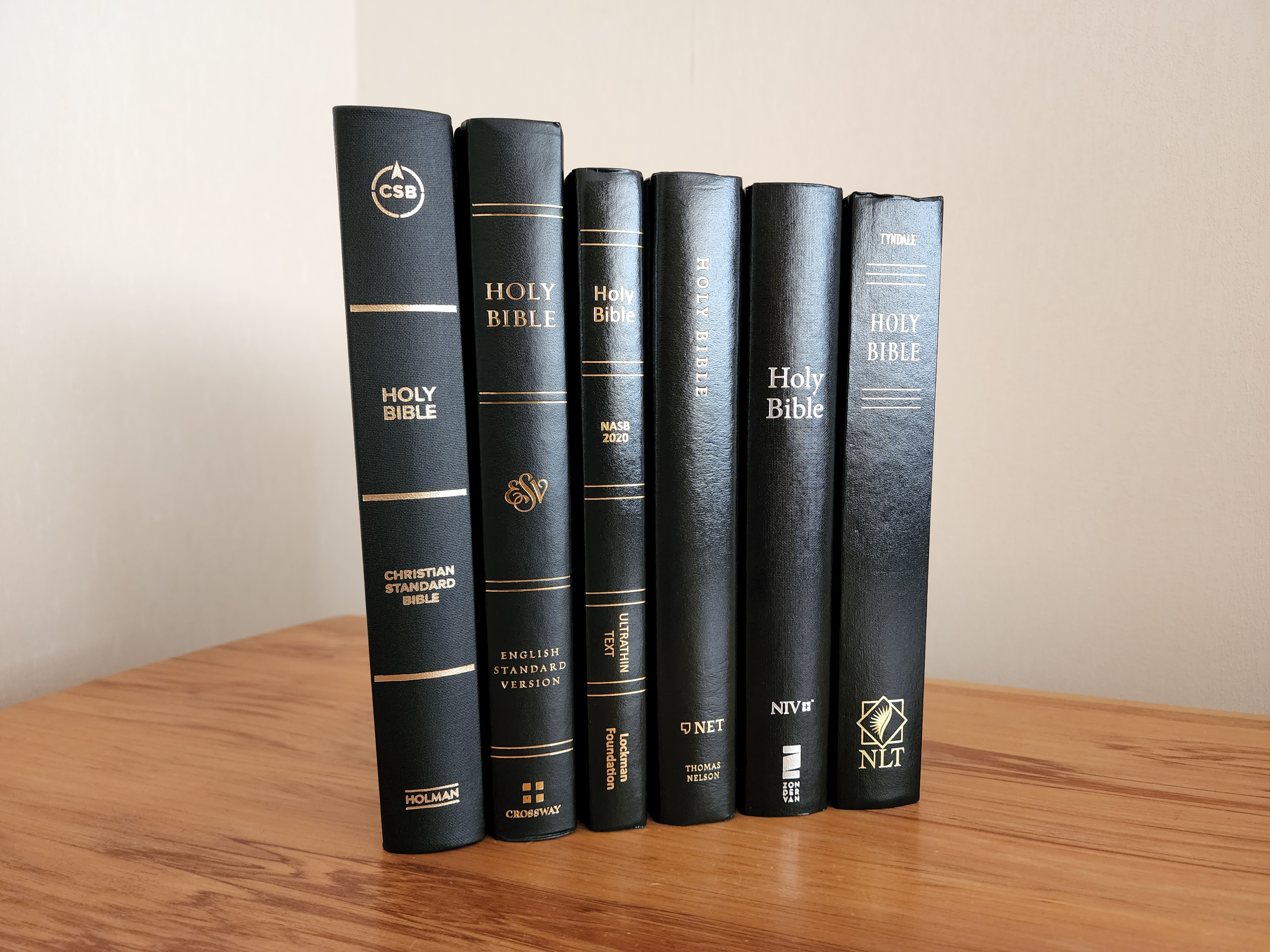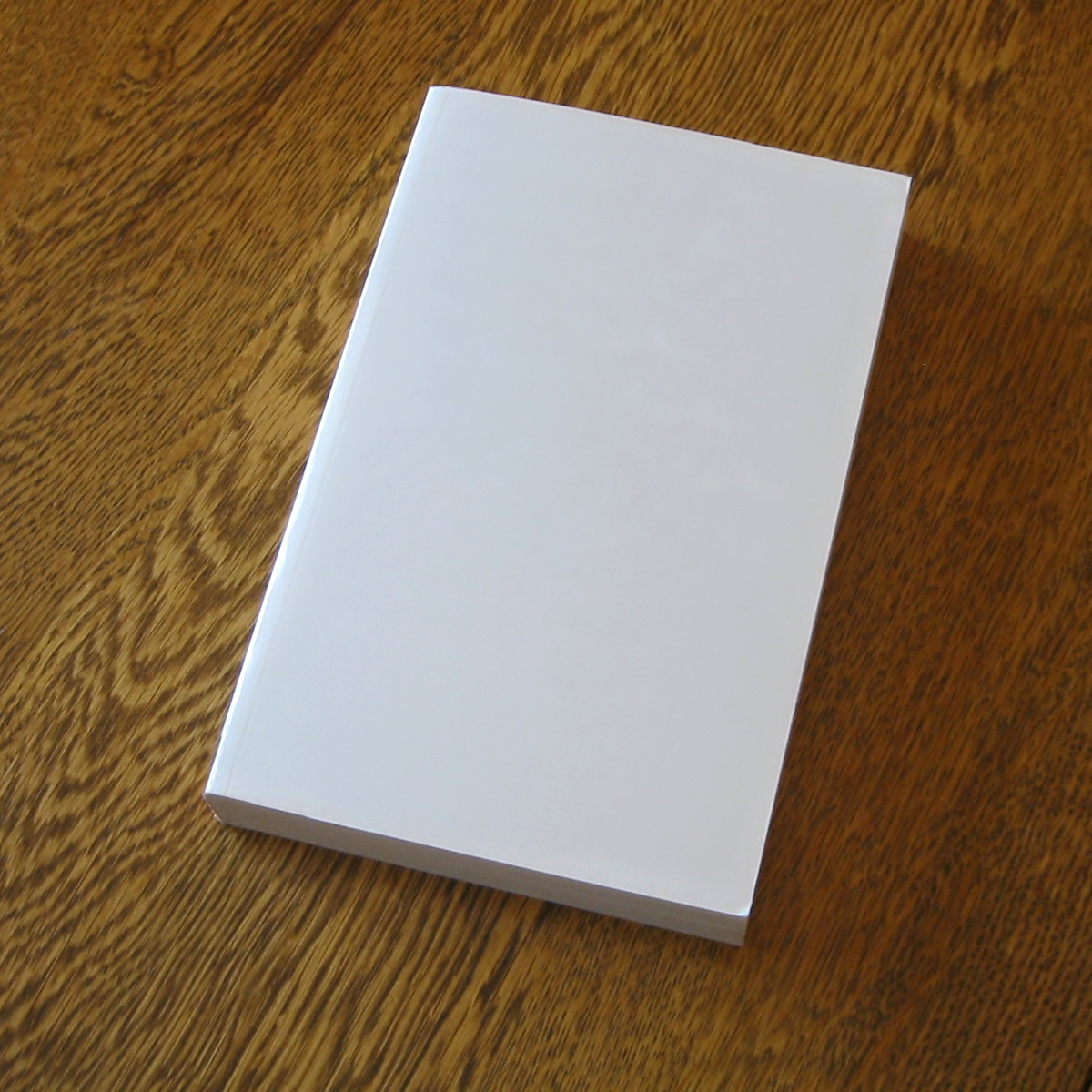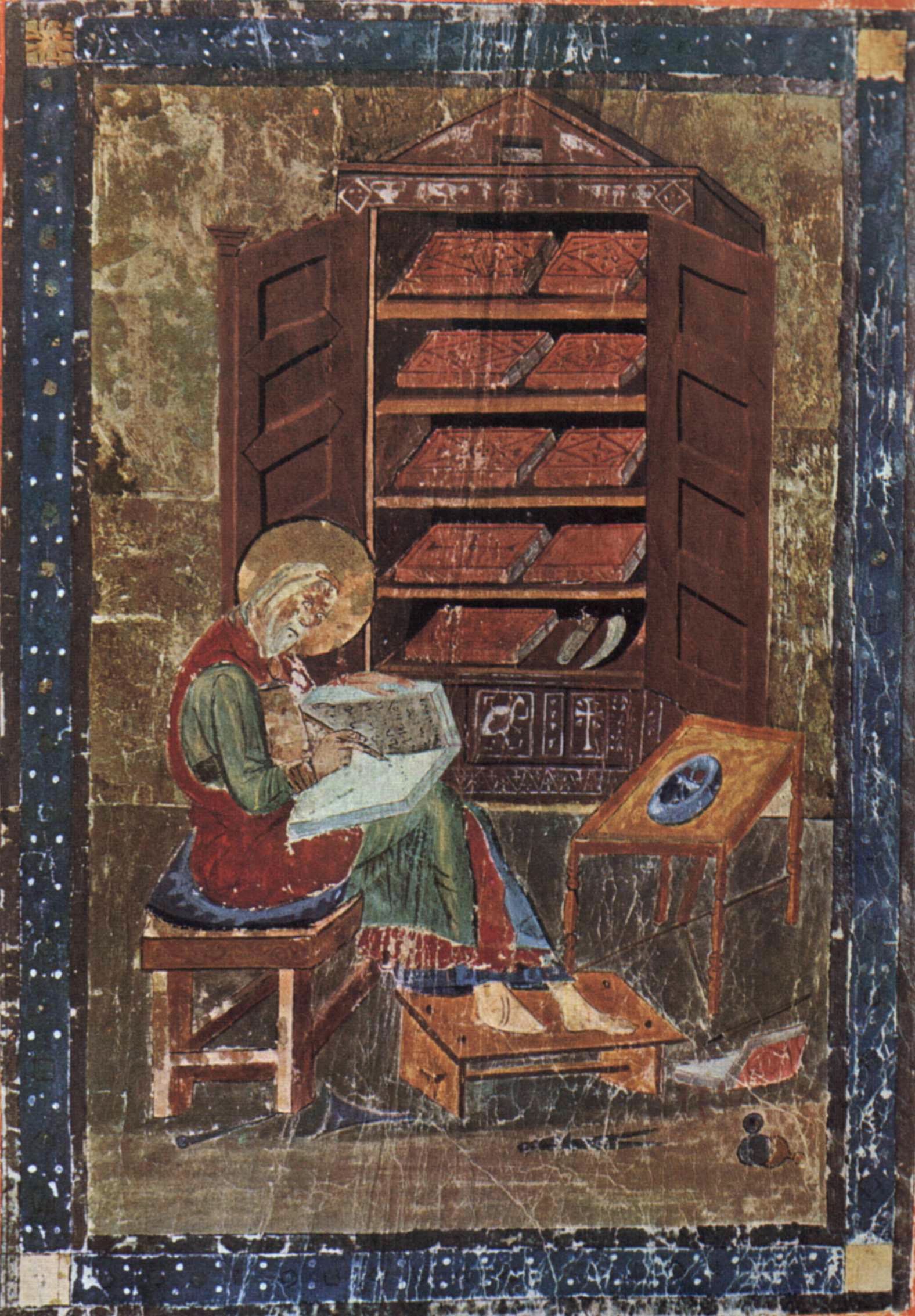|
Limp Vellum
Limp binding is a bookbinding method in which the book has flexible cloth, leather, vellum, or (rarely) paper sides. When the sides of the book are made of vellum, the bookbinding method is also known as limp vellum. The cover is made with a single piece of vellum or alternative material, folded around the textblock, the front and back covers being folded double. The quires are sewn onto sewing supports such as cords or alum-tawed thongs and the tips of the sewing supports would be laced into the cover. The thongs could also be used at the fore edge of the covers to create a closure or tie. In limp binding the covering material is not stiffened by thick boards, although paste-downs, if used, provide some stiffness; some limp bindings are only adhered to the back of the book. Some limp vellum bindings had yapp edges that flop over to protect the textblock. Usage Limp vellum bindings for commonplace books were being produced at least as early as the 14th century and probably ear ... [...More Info...] [...Related Items...] OR: [Wikipedia] [Google] [Baidu] |
Commonplace Book
Commonplace books (or commonplaces) are a way to compile knowledge, usually by writing information into blank books. They have been kept from antiquity, and were kept particularly during the Renaissance and in the nineteenth century. Such books are similar to scrapbooks filled with items of many kinds: notes, proverbs, adages, aphorisms, maxims, quotes, letters, poems, tables of weights and measures, prayers, legal formulas, and recipes. Entries are most often organized under systematic subject headings and differ functionally from journals or diaries, which are chronological and introspective. Overview "Commonplace" is a translation of the Latin term ''locus communis'' (from Greek ''tópos koinós'', see literary topos) which means "a general or common place", such as a statement of proverbial wisdom. In this original sense, commonplace books were collections of such sayings, such as John Milton's example. "Commonplace book" is at times used with an expansive sense, refe ... [...More Info...] [...Related Items...] OR: [Wikipedia] [Google] [Baidu] |
Bookbinding
Bookbinding is the process of building a book, usually in codex format, from an ordered stack of paper sheets with one's hands and tools, or in modern publishing, by a series of automated processes. Firstly, one binds the sheets of papers along an edge with a thick needle and strong thread. One can also use loose-leaf rings, binding posts, twin-loop spine coils, plastic spiral coils, and plastic spine combs, but they last for a shorter time. Next, one encloses the bound stack of paper in a cover. Finally, one places an attractive cover onto the boards, and features the publisher's information and artistic decorations. The trade of bookbinding includes the binding of blank books and printed books. Blank books, or stationery bindings, are books planned to be written in. These include accounting ledgers, guestbooks, logbooks, notebooks, manifold books, day books, diary, diaries, and sketchbooks. Printed books are produced through letterpress printing, offset printing, offset litho ... [...More Info...] [...Related Items...] OR: [Wikipedia] [Google] [Baidu] |
University Of Texas At Austin School Of Information
The University of Texas School of Information is a graduate school and undergraduate school at the University of Texas at Austin, offering master's and doctoral degrees in information studies, as well as certificates of advanced study and an undergraduate minor. In 2021, they began offering a bachelor's degree in informatics. UT iSchool graduates find careers in archival enterprise, information architecture, information policy, information systems design and management, information usability, librarianship, multimedia design, museum work, preservation and conservation, and records management. History The school was founded in 1948 as a part of the UT Graduate School as the Graduate School of Library Science, offering a Master of Library Science (MLS) degree as well as certification for school librarianship, an offering which has been continually provided to this day. In 1967 the school initiated a Certificate of Advanced Study followed in 1969-70 by a doctoral program, leadi ... [...More Info...] [...Related Items...] OR: [Wikipedia] [Google] [Baidu] |
Editions Of The Bible
The Christian Bible has been translated into many languages from the biblical languages of Hebrew, Aramaic, and Greek. the whole Bible has been translated into 756 languages, the New Testament has been translated into an additional 1,726 languages, and smaller portions of the Bible have been translated into 1,274 other languages. Thus, at least some portions of the Bible have been translated into 3,756 languages. Textual variants in the New Testament include errors, omissions, additions, changes, and alternate translations. In some cases, different translations have been used as evidence for or have been motivated by doctrinal differences. Original text Hebrew Bible The Hebrew Bible was mainly written in Biblical Hebrew, with some portions (notably in Daniel and Ezra) in Biblical Aramaic. Some of the Deuterocanonical books not accepted in every denomination's canons, such as 2 Maccabees, originated in Koine Greek. In the third and second centuries B.C.E., the Hebrew scr ... [...More Info...] [...Related Items...] OR: [Wikipedia] [Google] [Baidu] |
Christian Devotional Literature
Christian devotional literature (also called devotionals or Christian living literature) is religious writing that Christian individuals read for their personal growth and spiritual formation. Such literature often takes the form of Christian daily devotionals. Original excerpts including the ''Book of Daniel'' and ''Leviticus'' derive from Ancient Roman (753 BC – 640 AD), Greek and Byzantine (395 AD – 1453 AD) culture – and encompass the past relationship of God's Law through the Old Testament. Though these are the most significant accounts, the majority of the literature comprises commentaries to the ever changing social and political reforms of human history – including the impact of censorship, persecution – the reign of Emperor Nero (54 AD – 68 AD) and Diocletian (284 AD – 305 AD) and martyrdom on Christian life through the ages (Gregory, 2001). The sources of devotional literature vary across society. Monks, priests and saints such as ''Agios Paisios (Άγ ... [...More Info...] [...Related Items...] OR: [Wikipedia] [Google] [Baidu] |
Paperback
A paperback (softcover, softback) book is one with a thick paper or paperboard cover, also known as wrappers, and often held together with adhesive, glue rather than stitch (textile arts), stitches or Staple (fastener), staples. In contrast, hardcover, hardback (hardcover) books are bound with cardboard covered with cloth, leather, paper, or plastic. Inexpensive books bound in paper have existed since at least the 19th century in such forms as pamphlets, yellow-backs, yellowbacks and dime novels. Modern paperbacks can be differentiated from one another by size. In the United States, there are "mass-market paperbacks" and larger, more durable "trade paperbacks". In the United Kingdom, there are A-format, B-format, and the largest C-format sizes. Paperback editions of books are issued when a publisher decides to release a book in a low-cost format. Lower-quality paper, glued (rather than stapled or sewn) bindings, and the lack of a hard cover may contribute to the lower cost of ... [...More Info...] [...Related Items...] OR: [Wikipedia] [Google] [Baidu] |
Private Presses
Private press publishing, with respect to books, is an endeavor performed by craft-based expert or aspiring artisans, either amateur or professional, who, among other things, print and build books, typically by hand, with emphasis on design, graphics, layout, fine printing, binding, covers, paper, stitching, and the like. Description The term "private press" is not synonymous with "fine press", "small press", or "university press" – though there are similarities. One similarity shared by all is that they need not meet higher commercial thresholds of commercial presses. Private presses, however, often have no profit motive. A similarity shared with fine and small presses, but not university presses, is that for various reasons – namely quality – production quantity is often limited. University presses are typically more automated. A distinguishing quality of private presses is that they enjoy sole discretion over literary, scientific, artistic, and aesthetic merits. C ... [...More Info...] [...Related Items...] OR: [Wikipedia] [Google] [Baidu] |
Standing On A Limp Vellum Bound Book With Fore-edge Ties (Rome, 1578-1616)
Standing, also referred to as orthostasis, is a position in which the body is held in an upright (orthostatic) position and supported only by the feet. Although seemingly static, the body rocks slightly back and forth from the ankle in the sagittal plane, which bisects the body into right and left sides. The sway of quiet standing is often likened to the motion of an inverted pendulum. Standing at attention is a military standing posture, as is stand at ease, but these terms are also used in military-style organisations and in some professions which involve standing, such as modeling. ''At ease'' refers to the classic military position of standing with legs slightly apart, not in as formal or regimented a pose as standing at attention. In modeling, ''model at ease'' refers to the model standing with one leg straight, with the majority of the weight on it, and the other leg tucked over and slightly around. There may be a time when a person is standing, where they lose control d ... [...More Info...] [...Related Items...] OR: [Wikipedia] [Google] [Baidu] |
Bookbinding
Bookbinding is the process of building a book, usually in codex format, from an ordered stack of paper sheets with one's hands and tools, or in modern publishing, by a series of automated processes. Firstly, one binds the sheets of papers along an edge with a thick needle and strong thread. One can also use loose-leaf rings, binding posts, twin-loop spine coils, plastic spiral coils, and plastic spine combs, but they last for a shorter time. Next, one encloses the bound stack of paper in a cover. Finally, one places an attractive cover onto the boards, and features the publisher's information and artistic decorations. The trade of bookbinding includes the binding of blank books and printed books. Blank books, or stationery bindings, are books planned to be written in. These include accounting ledgers, guestbooks, logbooks, notebooks, manifold books, day books, diary, diaries, and sketchbooks. Printed books are produced through letterpress printing, offset printing, offset litho ... [...More Info...] [...Related Items...] OR: [Wikipedia] [Google] [Baidu] |
Tanning (leather)
Tanning, or hide tanning, is the process of treating Skinning, skins and Hide (skin), hides of animals to produce leather. A tannery is the place where the skins are processed. Historically, vegetable based tanning used tannin, an acidic chemical compound derived from the bark of certain trees, in the production of leather. An alternative method, developed in the 1800s, is chrome tanning, where chromium salts are used instead of natural tannins. History Tanning hide into leather involves a process which permanently alters the protein structure of skin, making it more durable and less susceptible to decomposition and coloring. The place where hides are processed is known as a ''tannery''. The English word for tanning is from the medieval Latin verb , from the noun (oak bark). This term may be derived from a Celtic word related to the Proto-Indo-European *' meaning 'fir tree'. (The same root is the source for Old High German meaning 'fir', related to modern German ''Tannenb ... [...More Info...] [...Related Items...] OR: [Wikipedia] [Google] [Baidu] |
Units Of Paper Quantity
Various measures of paper quantity have been and are in use. Although there are no S.I. units such as quires or bales, there are ISO''ISO 4046-3:2002 Paper, board, pulps and related terms – Vocabulary – Part 3: Paper-making terminology'' (2002), quoted in ''ISO 22414:2004(E) Paper – Cut-size office paper – Measurement of edge quality'' (2004) Geneva:ISO. and DIN''Papier und Pappe: DIN 6730:2011-02: Begriffe'' (''Paper and board: vocabulary'') (2011) (in German). Berlin: Beuth Verlag. standards for the ream. Expressions used here include U.S. Customary Units. Units ; Writing paper measurements : 25 sheets = 1 quire : 500 sheets = 20 quires = 1 ream : 1,000 sheets = 40 quires = 2 reams = 1 bundle : 5,000 sheets = 200 quires = 10 reams = 5 bundles = 1 bale : 200,000 sheets = 8,000 quires = 400 reams = 200 bundles = 40 bales = 1 pallet ; 'Short' paper measurements : 24 sheets = 1 'short' quire : 480 sheets = 20 'short' quires = 1 'short' ream : 960 sheets = 40 'short' quir ... [...More Info...] [...Related Items...] OR: [Wikipedia] [Google] [Baidu] |








